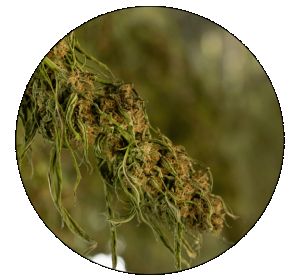Produced in Partnership with ARES ScientificReviewed by Emily MageeMar 22 2023
Drying is an indispensable step in the production of cannabis as it ensures the preservation of the final product’s quality for consumer use. However, developing a reliable and consistent drying process for cannabis can be challenging due to the critical details that are often overlooked.

Image Credit: ARES Scientific
Various scientific factors, including transpiration, relative humidity, temperature, air movement, and water activity, come into play during cannabis drying. These factors are interconnected, and altering one of them could potentially impact the others.
Effective management of the environmental factors in the cannabis drying rooms plays a significant role in ensuring that the drying process is reproducible. Consistency is key because the ultimate aim is to provide a uniform product with each harvest.
The quality of a commercial cannabis grower’s product plays a crucial role in its long-term profitability. It is worth noting that growers who produce excellent products could still go out of business if the quality of their products is sub-optimal.
This is because consumer demand for their cannabis will likely decrease, negating other positive aspects of their production process. Ultimately, if consumers do not approve of the product, everything else related to the company’s growth becomes irrelevant.
Drying cannabis is a complex process that requires great care. If a grower dries the cannabis too slowly, they run the risk of losing the entire crop to mold and fungus. Conversely, if they dry it too quickly, they will sacrifice the flavor, aroma, taste, and color that are essential to satisfying the consumer.
The rate of drying is determined by the environmental conditions within the drying room, which must be meticulously controlled. When first harvested, cannabis typically contains about 80% water weight. The objective is to attain a moisture content of 10-14% and a water activity level below 0.60.
Moisture content refers to the quantity of water present in the buds, whereas water activity refers to the amount of water available for harmful microorganisms to thrive.
The key to drying cannabis is to systematically reduce the moisture content of the plants while minimizing the loss of terpenes and other desirable biomolecules. It is essential to achieve this in a controlled manner while drying quickly enough to prevent the growth of mold and mildew.
Uniformity in the Drying Room
Uniformity in the drying room is critical as it leads to a product batch that is uniform in quality. One significant challenge that arises in drying rooms is the non-uniformity of the buds’ moisture content in various parts of the room.
Non-uniformity can result from the design of the drying room, which can cause one section of the room to have a higher relative humidity than other areas. For instance, if the room’s overall airflow moves from right to left, the left side of the room will receive more humid air because water is evaporating off the plants on the right side.
Moreover, unevenly distributed plant material or packing material too closely will reduce uniformity. Larger buds and plant sections tend to contain more water and must be evenly distributed with smaller cuttings.
Also, placing the plant material too close together will hinder airflow between buds, creating microenvironments of higher humidity within the drying room.
Drying room uniformity is not only crucial for the product’s quality but also saves money and streamlines the drying workflow. When a drying room is uniformly set up, the entire harvest can be moved out simultaneously.
Drying rooms without uniform setups will necessitate growers to move different sections at different times, which can be expensive and jeopardize plant quality.
Drying Room Setup Fundamentals
When planning a drying room, a grower must determine the amount of plant material to be dried and the frequency of harvests to determine the necessary room size and the possibility of requiring multiple rooms.
Professional consulting firms may suggest using multiple drying rooms, particularly for staggered harvests, to enable strict scheduling and room sanitization before each harvest.
Adequate HVAC and dehumidification are necessary to control the temperature and relative humidity of the drying room, with dehumidifiers being particularly important in the first 24 to 48 hours post-harvest when around 50 percent of the plant’s moisture is removed.
Although trimming excess fan leaves can help regulate moisture output, it is still best to have equipment that can handle the maximum room requirements.
The optimal temperature range for a cannabis drying room is between 55 and 65 degrees Fahrenheit (12.8-18.3 degrees C), with humidity levels maintained between 50 and 60 percent.
The ideal temperature and humidity levels for a drying room are typically established by user preference and experimentation. Once agreed upon by a facility, these levels should remain consistent throughout the drying process.
To ensure proper drying conditions, the room’s equipment must maintain the appropriate temperature and humidity within a range of plus or minus 1 degree Celsius and 3 percent humidity.
Airflow is a critical component of the drying process, and both vertical and horizontal airflow must be employed to maintain room uniformity. However, it is important to avoid blowing air directly onto the plants as this can cause them to dry out too quickly.
The primary objective is to crystalize the trichomes without agitating the buds or over-drying them.
To maintain room sterility, air filtration is also essential. Some drying rooms utilize positive pressure to prevent contaminants from entering when the door is opened.
It is recommended that cannabis be dried in low light or the dark, as exposure to light, particularly ultraviolet light, can reduce the potency of the flower. Low-intensity lights can be turned on briefly when checking the plants, but they should be turned off when exiting the drying room.
Environmental Controls in Trimming Areas
For optimal results, the trimming area should be set to the same environmental conditions as the drying room to prevent any loss or absorption of moisture after drying.
It is recommended that the trimming area be set up to be as close to, if not identical to, the original drying conditions. This consistency helps to maintain the quality of the product.
After trimming, samples of flowers should be evaluated to determine if any negative moisture changes have occurred during the trimming process.
Maximizing Space in the Drying Room: Wet Trimming on Trays vs. Hang Drying
When it comes to drying rooms, growers should aim to maximize the limited space available to them. Although traditional hang drying remains a popular method in the industry, it is far less space efficient than wet trimming and drying on trays.
This alternative method involves removing the stems before drying, which frees up more drying room space for the flower. Ultimately, the choice of drying method depends on the grower’s preference. However, given the shrinking margins in the cannabis industry, growers should consider maximizing the productivity of their drying space.
ARES Scientific boasts extensive experience in supplying equipment and consultation to the pharmaceutical industry, which it brings to the cannabis industry. The company’s world-class manufacturers produce top-quality products for drying and analyzing cannabis.
As the cannabis industry becomes increasingly regulated, product testing, quality control, and regulations will continue to mirror those of the traditional pharmaceutical industry.
As a result, switching to handling processes certified to leave no trace elements and analyzing equipment with high precision with traceable documentation will become necessary.
One of the most popular cannabis products offered by ARES Scientific is the WavDri trays from Metro. Specifically designed for cannabis drying rooms, these trays optimize the airflow to the flower while ensuring that no harmful residues or chemicals are transferred to the product, as they are food-contact certified.
Moreover, the trays incorporate Microban technology to prevent the growth of mold and mildew. The trays can be easily rotated during the drying process and come with indicators to help keep track of rotation. Additionally, they can be washed at high temperatures, up to 212 degrees F, for easy cleaning.
To accurately analyze the moisture content of plants, ARES Scientific offers Ohaus moisture analyzers. Premier grow operations measure the exact moisture content of their flowers and perfectly time the drying process.
By compensating for the moisture lost between leaving the drying room and final packaging, growing operations can save up to 2 percent of lost weight per year, which translates to 2 percent additional revenue.
Metro is North America’s largest producer of custom shelving and storage and offers custom storage racks, drying racks, and nursery shelving to maximize productivity in grow spaces.
Metro shelving is especially popular, as it is epoxy coated to be resistant to bacterial and mold growth. The Metro WavDri tray is one of ARES Scientific’s most sought-after products as it maximizes space, is direct food contact certified, and discourages the growth of mold and bacteria with the Microban technology.
About ARES Scientific
Since 2009 ARES Scientific has been helping the scientific community identify and implement the most innovative and sustainable products for their facilities. We are pleased to offer our clients a pre-qualified portfolio of premier manufacturing companies specialized in building the highest quality products within their particular area of expertise. Many of these companies hold the distinction of being multi-generational family-owned companies that have been in continuous operation for decades.
Today, we are proud to say that we have helped thousands of the most prestigious institutions and businesses accelerate medical breakthroughs and enhance the quality of their patient care. Our vision is to continue building long-lasting relationships with our clients and manufacturer partners and bring them together in their quest to improve the quality of life in our communities.
Sponsored Content Policy: AZO Life Sciences publishes articles and related content that may be derived from sources where we have existing commercial relationships, provided such content adds value to the core editorial ethos of AZO Life Sciences which is to educate and inform site visitors interested in medical research, science, medical devices and treatments.